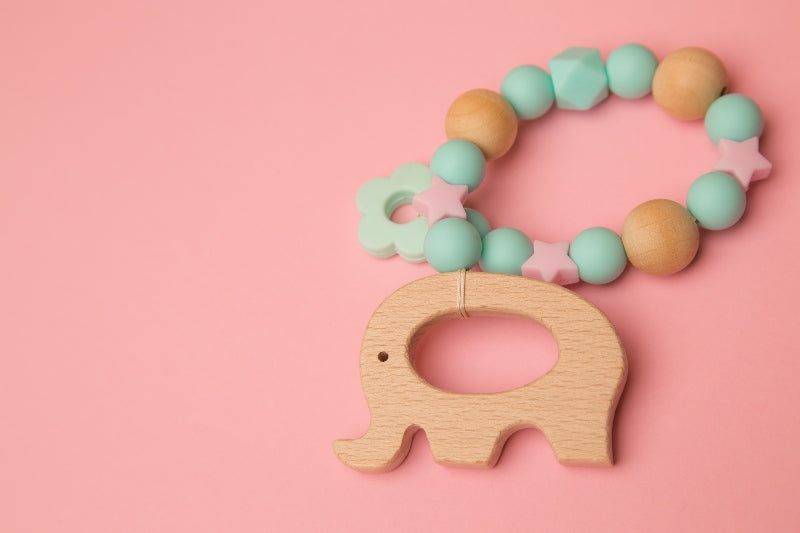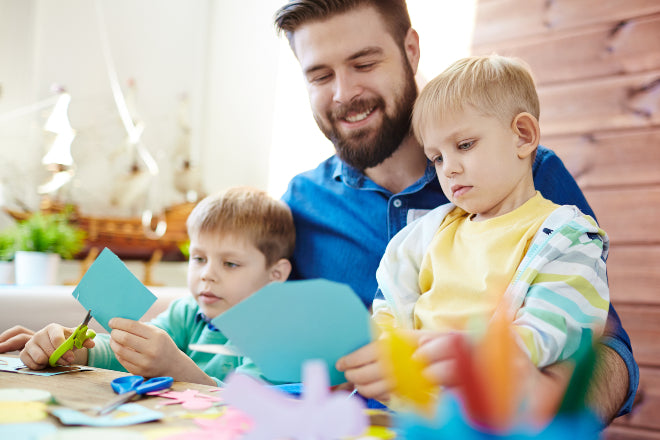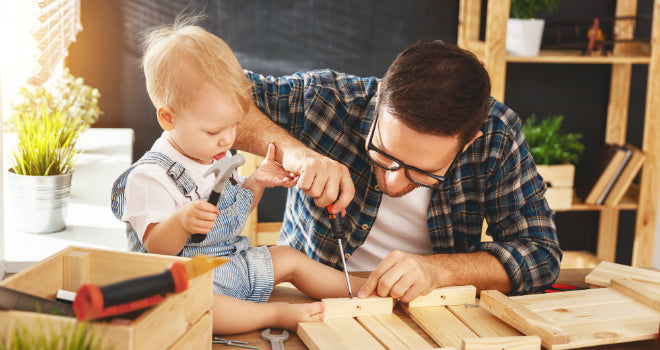" From the first scribble to a landscape painting, support your child "
Dot, dot, comma, dash - the moon face is finished! Although this saying sounds very simple, children need to have acquired quite a few skills before they can draw the moon. It is usually difficult for adults to understand what small children have to learn to draw. Find out in this article why drawing with children is an important building block in cognitive development and how you can encourage your child to let off steam creatively.
What our children learn from their first paintings
As an adult, you pick up a pencil and start drawing. Depending on your needs, you can create landscapes, animals or abstract things such as site plans and geometric figures. Of course, the artistic value of the result is highly dependent on the individual, but sketching in itself is not a major challenge. It's different with small children. They first have to learn to hold a pencil or paintbrush in their hands. This requires fine motor skills as well as hand-eye coordination. Furthermore, the toddler must control the movement of the hand.

Toddlers must first learn to hold the brush in their hand
Getting the idea of a stroke onto the paper requires maximum concentration and coordination. Before a picture is created, it has to be in the painter's head. Painting with children therefore also develops their imagination. They have to observe and analyze the world very closely. As a result, their perception becomes more and more precise and the picture of the environment becomes more detailed.
Learning to draw is a challenge for children's analytical thinking. They have to recognize which features are typical of certain things. Which details increase the recognition value?
Coloring, doodling, drawing with chalk or watercolors ensure that new connections are created and strengthened in the brain. Talking to your child afterwards about the picture and the materials and techniques used also strengthens their language skills. Young children learn new words and connections very clearly in this way.
The right motivation for children
Start as early as possible to awaken an interest in drawing. Even babies can create their first masterpieces with finger paints. The joy of the effect plays a very important role here: something new is created through their own movements. This is an incredibly motivating experience for your baby.

Little girl and grandfather painting with wax crayons
The best way to encourage your child to paint is to always offer them age-appropriate materials. Finger paints, wax crayons and thick crayons are useful for small children. Finer crayons and watercolors can be added later. In general, wooden crayons are preferable if your toddler likes to put things in their mouth or occasionally draws away from the paper.


If your child uses spillable painting utensils such as watercolors, put on a child's apron to protect their clothes. This also helps with all kinds of handicrafts! In the initial phase, the largest possible paper surfaces and boards serve well as a base. Over time, coloring pads, blocks and canvases will also be of interest. The more varied the material is, the more it inspires new drawing experiments. But don't provide everything at once.
Instead, tempt them with new painting utensils from time to time. Leave everything where your children can do it on their own.
To ensure that motivation remains constant, you as a parent should always be positive about your child's artwork. Every scribble or mess of paint is beautiful. Always praise the act of painting itself. Phrases such as "You're painting really hard" or "It's great how you're working on your picture" focus more on the process than the result.
Ideas to encourage the child
It's best to sit down together at home to learn to draw. On the one hand, this makes you a role model, and on the other hand, activities in a group are more fun than alone. When drawing with children, your own pictures reveal important aspects and connections to the youngsters.

Ideas to encourage the child
Have you ever tried painting games? You can play these even with a small child. They always go down well at children's birthday parties:
- Stories: Read out a story or tell a fairy tale. The task now is to put certain characters or an entire scene on paper.
- Wolpertinger: Fold a sheet of paper back seven times. The first person now draws ears or antlers in the top field. Only two small lines in the second field may indicate exactly where the head should be. The top field is folded back and the piece of paper is passed to the next person. This person now draws an animal's head. This continues with the neck, body and arms, legs and feet. The last person may unfold the sheet and show the Wolpertinger around.
- Blob pictures: Use watercolors to paint a colorful blob on a leaf. Fold it once in the middle and press it firmly together. When you unfold it, a colorful, symmetrical blob appears. What could it be? Now work out the figure with pencils.
Incidentally, paper and pens are also an effective distraction during tantrums, frustration or long waiting times.
The stages of development
Even babies can produce simple scribbles. From around twelve months, the pencil can be held in the fist and pressed onto the surface. The movements tend to come from the upper body, while the arm remains stiff. The technique gradually becomes more refined. The arm and hand are used more purposefully to capture shapes on paper. But it is not until the age of three that most toddlers produce their first cephalopod. This is a round face to which arms and legs are directly attached as lines. Such a drawing places enormous demands on fine motor skills and perception.

Girl draws colorful flower
At kindergarten age, learning to draw continues to develop through the repetition of regular shapes. Different combinations are used to create different objects: The cow consists of two ovals and four lines, the house of a square and a triangle. At the beginning of his school years, the artworks become more naturalistic. Conscious techniques are now increasingly incorporated. Proportions are estimated and spatial perspective is added. When children paint with watercolors, they consciously mix new colors.
What can parents do specifically?
A positive attitude towards the children's drawings is essential. Honor the works of art by displaying them in the home. Very helpful for this are mounting clips. Attached to cupboards and shelves, they quickly pick up the latest works.


Talk to your children about what they have painted. Keep the questions open. "Can you tell me something about your painting?" would be a suitable prompt. It is very exciting to observe what is going on in the little ones' minds, what is on their minds. Painting times together also have a positive effect on mental health and bonding.


Be creative when painting with toddlers. Provide materials that stimulate the imagination. For example, pictures can also be decorated with motif beads can be glued on. A combination of painting and handicrafts is just as exciting. After all, there are no limits to art anyway!










